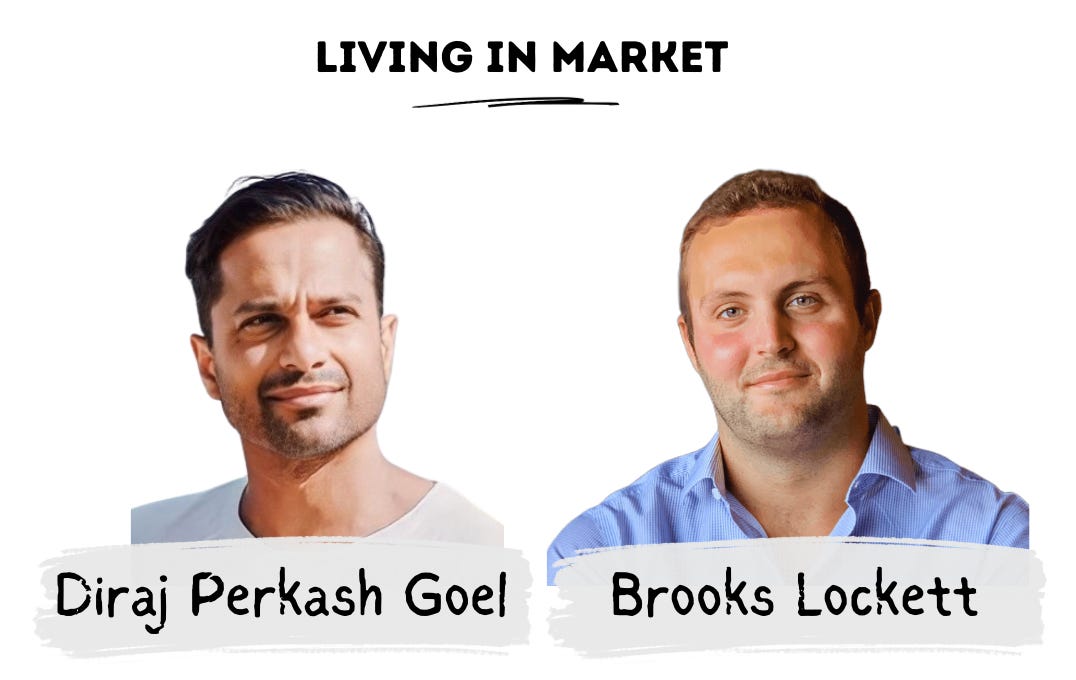How to get in a 3-way with your customers
TL;DR: high-energy communities are the future of growth, know your “captivated problem” & you can grow A LOT without ads.
Read time: 5 minutes
The following is a micro-interview with Diraj Perkash Goel – CEO at GetFresh Ventures.
You've seen a lot in this business Diraj. How do you think about GTM strategies & profitability?
Well, it's not so much about profitability as it’s about de-risking the investment.
Profitability is a way for investors to gauge cash flow. But you don't need to be profitable, you need profitable unit economics. This means selling a product that costs $1 for $2 or $3 or $4.
You can be unprofitable if you're investing in IP, building a team, or engineering in anticipation of demand. But it’s measured losses rather than reckless spending.
You mentioned organic, creator-led channels like LinkedIn as an alternative to over indexing on paid.
Personal brands have already eclipsed corporate brands. Over time (like with Steve Jobs and Apple) the brand may take on a life of its own. But it's all driven by individuals to start.
What makes this work? Is it raw talent or can startups cultivate this internally?
It’s a mix but talent matters a lot.
Peloton leveraged the personalities of their instructors. Lululemon was early to the brand ambassador model. This works in B2B & B2C.
We've applied this with one of our portfolio companies called CompanyOn that helps nurses advance from individual practitioners to entrepreneurs with their own clinics & dramatically-increased earnings.
I also did this with a Sales Enablement Program I started called Affluence Academy, for one of our CPG companies. This was the first venture firm I built from the ground up internally after leaving my Head of Operations job at HootSuite (a high-paying job).
I reached out to influencers on Instagram and just asked about their earnings from partnerships based on their follower counts (ranging from 3,000 to 3 million). The overwhelming majority of influencers couldn't monetize sustainably.
This was the problem Affluence Academy solved. It taught influencers how to win profitable partnerships and negotiate contracts for more consistent income.
We used network effects instead of traditional advertising. Influencers educated and recruited other influencers through a referral mechanism. Our brand generated $10 million in revenue in 14 months.
Markets keep saturating. New opportunities are here for businesses that can operate within network-driven frameworks.
What opportunities do you see for founders, companies and marketers in the next 5-10 years?
It's obvious that it needs to be grounded in community.
There are so many channels now where people gravitate that you don't have to go the traditional route.
If founders wake up and go, "Hey, I don't need to create a pitch deck. I need to figure out how to make a million dollars," the mindset completely changes.
Your path of least resistance is the most viable one.
You see brands buying communities now, and paying a premium because they're acquiring those high-energy audiences.
HubSpot did that a few years ago with The Hustle.
Exactly. There are so many ways you can get in front of people.
One of our portfolio companies hasn't spent $1 on ads at all. We launched in October for a platform called MyFO. It's for multifamily offices and single family offices with $2 million to $200 million in investable assets.
They're looking at Family Offices with higher volume of transactions and/or change management in their private asset investments.
A large part of our strategy was grassroots in validating needs with a high fidelity mockup and reaching out to high net worth folks and educated them on the platform and asking, "Would you use this, and who else do you know that we should talk to?"
We got the word out and we didn’t have our product in market.
We had a landing page and we had 1,000 people sign up.
We communicated and shared updates with the waitlist often.
And since October when we launched, we now have over 65 family offices already on the platform.
And, we're closing them on the first call.
And yet, we haven't spent a single dollar on ads and we're asking our clients, "Hey, who else do you think needs this? Send them over. Give us a referral."
This is what I like to call when you're in a three-way with your customer.
Most brands are in one way, right? We're talking to you.
The only time you talk to us is when there's a problem. Now you get into a two-way conversation, "Hey, we're working on this. What do you think? Can you tell us what you need?" Companies graduate to that.
Then you get into a three-way. Which is when customers are talking to customers.
Like Salesforce and their rabid fan base to head to Dreamforce yearly. And you don’t need to get to Salesforce level before you get to three-way conversation.
You can do this for B2B, you can do this for hardware, you can do this for B2C.
You can do this for anything because there is a consistent element in every single one of these businesses.
A human benefactor who wants to talk about how their day was saved and a desire to share their story.
Love it. That’s a great place to leave it. Thank you Diraj.
Thanks for having me!
Want to chat about funding, executive coaching or speaking opportunities with Diraj? Connect with him on LinkedIn or check out GetFresh Ventures.



